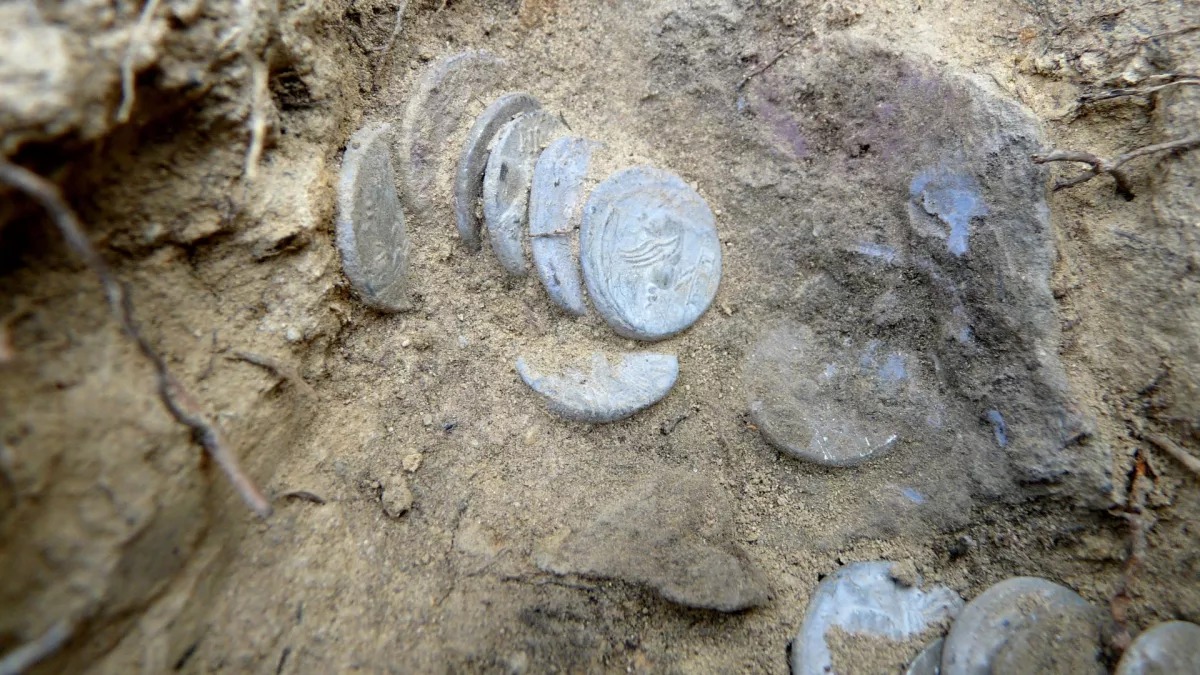It’s not every day someone discovers hidden treasure, let alone valuables that were buried over 2,000 years ago.

A hiker from an archeological group in Livorno, a port city in Tuscany, Italy, unearthed a trove of 175 silver coins, some of which archeologists say are from about 157 B.C.
The Hungarian Numismatic Society, a group of academic and museum professionals, shared news of the discovery in a press release and said the most recent coins in the group were from approximately 82 B.C., around when the hoard was likely buried.
The collection was found amid broken pieces of a small terracotta pot, which researchers believe likely stored the once-buried treasure.
The Roman denarii were located in November 2021 by a member of the Livorno Paleontological Archaeological Group, though news of the discovery was kept quiet until this week, as archaeologists examining the site of the finding wanted the area to be pristine. The keen-eyed group member spotted the coins glimmering on the ground amid a grouping of leaves. Only two of the 175 silver coins were broken.
The Livorno Paleontological Archaeological Group said the terrain where the coins were found has been declining as a result of recent deforestation.

Get breaking National news
Archeologists from the group speculated the coins may have been buried by a solider during the Roman Empire’s first large-scale civil war — though the owner clearly never returned to reclaim their stash.
The sum of the coins would be the equivalent of tens of thousands of dollars in today’s money.
Many of the coins would have been made the year the Roman general Lucius Cornelius Sulla fought a brutal, but ultimately successful, war in Italy against leaders of the Roman Republic. The win assured Sulla’s position as dictator of the Roman state in 82 B.C.
Lorella Alderighi, an archaeologist with Tuscany’s office for archaeology, told Live Science burying valuables was common among people of the time.
“The coins have definitely been hidden — they constituted a ‘treasure’ or piggy bank,” she said. “The easiest way to hide valuables was to bury them underground, away from homes where no one could find them.”
She speculated a soldier may have buried them to save them until he could start his own farm.
Other archeologists have suggested the coins may have instead been hidden by a wealthy merchant, who for whatever reason, also could not collect their wealth.
The silver coins will be displayed at the Museum of Natural History of the Mediterranean in Livorno, as per the Italian news agency Il Terrino.













Comments